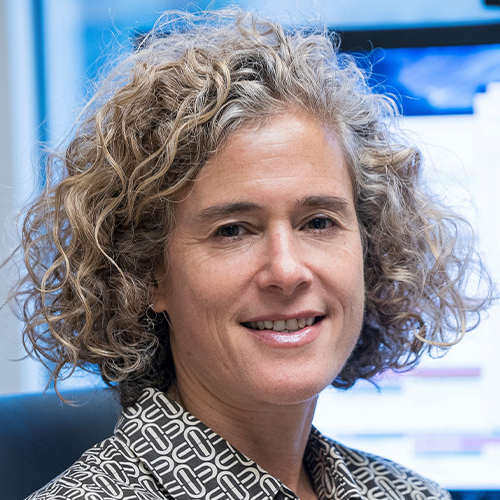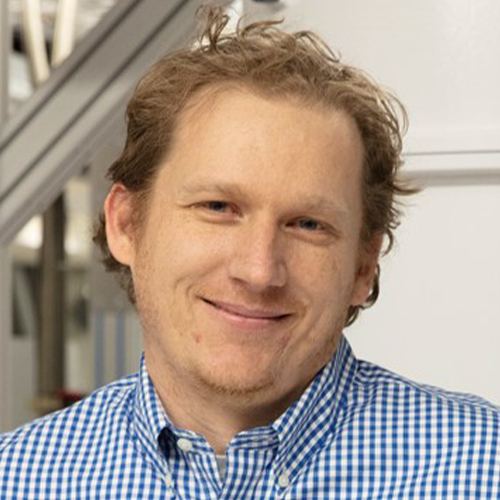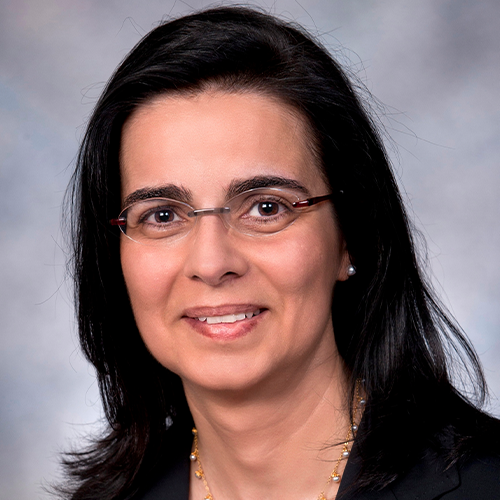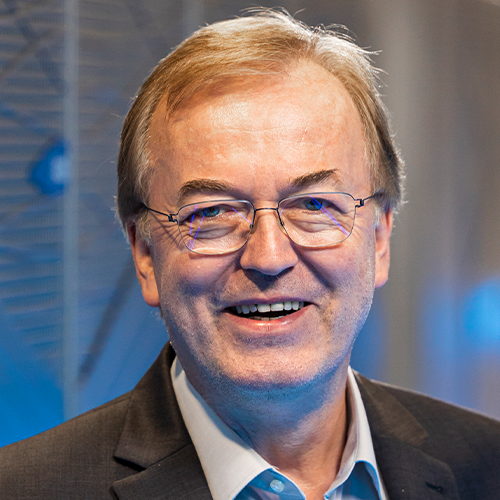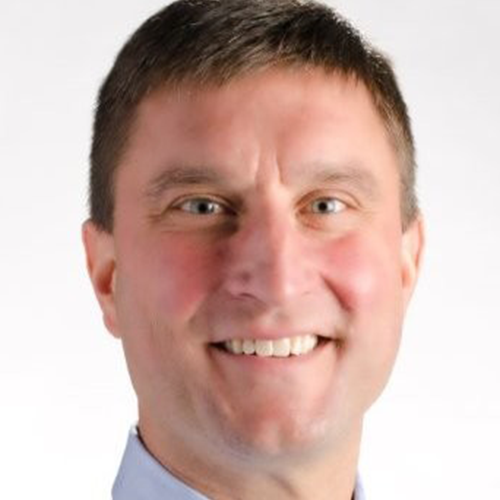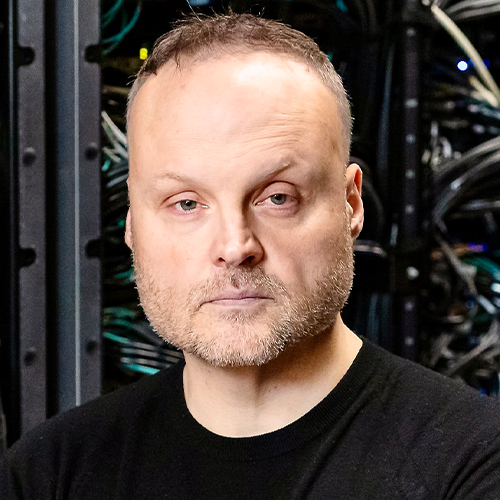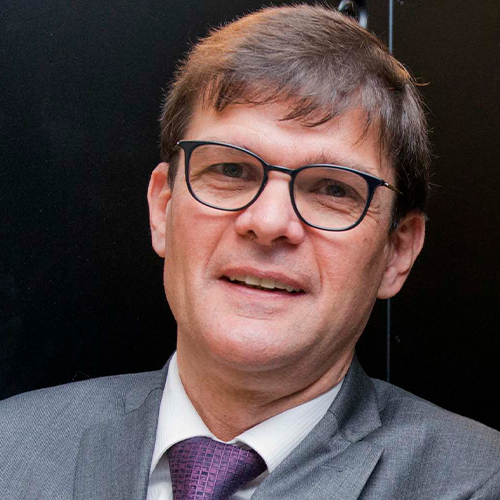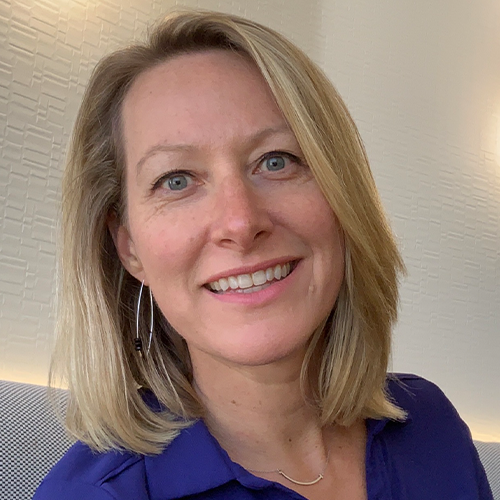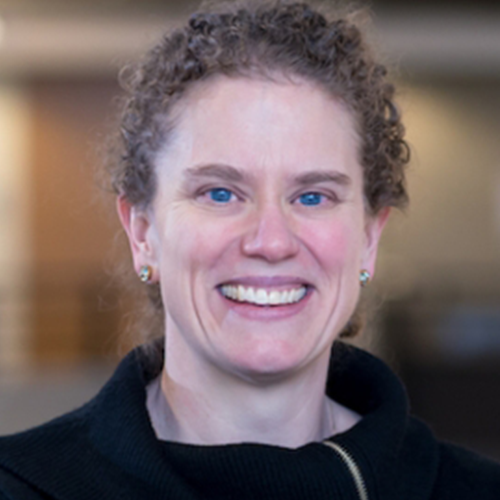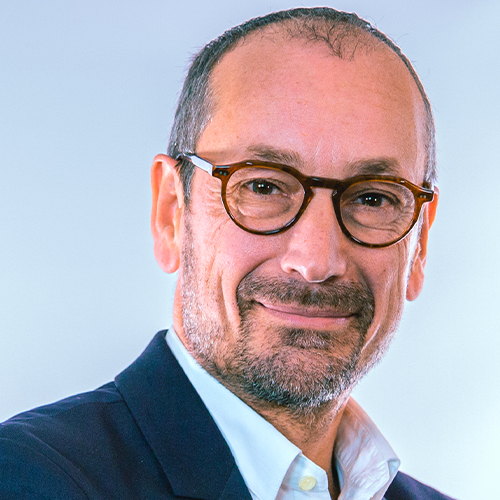
Eric Eppe
Head of Portfolio & Solutions, HPC & Quantum, Atos
Eric, congratulations on your selection as a 2022 HPCwire Person to Watch. Summarize the major milestones achieved last year for Atos in your division and briefly outline your HPC/AI/quantum agenda for 2022.
2021 was a strong year for Atos’ Big Data and Security teams, despite the pandemic. Atos’ BullSequana XH2000 was in its third year and was already exceeding all sales expectations. At one point, with more than 100.000 top bin AMD CPU sold on this platform, this made it the first entry for AMD EPYCtm in the TOP500.
We have not only won 5 out of 7 EuroHPC petascale projects, but also delivered some of the most significant HPC systems. For example, we delivered one of largest climate studies and weather forecast systems in the world to the European Centre for Medium-Range Weather Forecasts (ECMWF). In addition, Atos delivered a full BullSequana XH2000 cluster to the German climate research center (DKRZ). 2021 was also the launch of Atos’ ThinkAI and the delivery of a number of very large AI systems such as WASP in Sweden.
2022 is the year in which we are preparing the future with our next gen Atos BullSequana XH3000 supercomputer, a hybrid computing platform bringing together flexibility, performance and energy-efficiency. Announced recently in Paris, this goes along with the work that has started on hybrid computing frameworks to integrate AI and quantum accelerations with supercomputing workflows.
Sovereignty and sustainability were key themes at Atos’ launch of its exascale supercomputing architecture, the BullSequana XH3000. Please address in a couple paragraphs how Atos views these areas and why they are important.
This was a key point I mentioned during the supercomputer’s reveal. For Europe, the real question is should we indefinitely rely on foreign technologies to find new vaccines, develop autonomous electric vehicles, and find strategies to face climate changes?
The paradox is that Europe leads the semi-conductor substrate and manufacturing markets (with Soitec and ASML) but has no European foundry in the <10nm class yet. It is participating in the European Processor Initiative (EPI) and will implement SiPearl technologies in BullSequana XH3000, but it will take time to mature enough and replace other technologies.
Atos has built a full HPC business in less than 15 years, becoming No. 1 in Europe and in the top four worldwide in the supercomputer segment, with its entire production localized in its French factory. We are heavily involved in all projects that are improving European sovereignty.
EU authorities are today standing a bit behind compared to how the USA and China regulations are managing large petascale or exascale procurements, as well as the difference between how funding flows to local companies developing HPC technologies. This is a major topic.
Atos has developed a significant amount of IP, ranging from supercomputing platforms, low latency networks, cooling technologies, software and AI, security and large manufacturing capabilities in France with sustainability and sovereignty as a guideline. We are partnering with a number of European companies, such as SiPearl, IQM, Pasqal, AQT, Graphcore, ARM, OVH and many labs, to continue building this European Sovereignty.
Atos has announced its intention to develop and support quantum accelerators. What is Atos’ quantum computing strategy?
Atos has taken a hardware-agnostic approach in crafting quantum-powered supercomputers and enabling end-user applications. Atos’ ambition is to be a major player in multiple domains amongst which are quantum programming and simulation, the next-generation quantum-powered supercomputers, consulting services, and of course, quantum-safe cybersecurity.
Atos launched the Atos Quantum Learning Machine (QLM) in 2017, a quantum appliance emulating almost all target quantum processing units with abstractions to connect to real quantum computing hardware when available. We have been very successful with the QLM in large academics or research centers on all continents. In 2021, there was a shift of many commercial companies starting to work on real use cases, and the QLM is the best platform to start these projects without waiting for hardware to be available at scale.
Atos plays a central role in European-funded quantum computing projects. We are cooperating with NISC QPU makers to develop new technologies and increase their effectiveness in a hybrid computing scenario. This includes, but is not limited to, hybrid frameworks, containerization, parallelization, VQE, GPU usage and more.
Where do you see HPC headed? What trends – and in particular emerging trends – do you find most notable? Any areas you are concerned about, or identify as in need of more attention/investment?
As for upcoming trends in the world of supercomputing, I see a few low noise trends. Some technological barriers that may trigger drastic changes, and some arising technologies that may have large impacts on how we do HPC in the future. Most players, and Atos more specifically, are looking into quantum hybridization and decarbonization which will open many doors in the near future.
Up to this point, HPC environment has been quite conservative. I believe that administrators are starting to see the benefits of orchestration and micro service-based cluster management. There are some obstacles, but I do see more merits than issues in containerizing and orchestrating HPC workloads. There are some rising technological barriers that may push our industry in a corner, while at the same time giving us opportunities to change the way we architect our systems.
High performance low latency networks are making a massive use of coper cables. With higher data rates (400Gb/s in 2022 and 800Gb/s in 2025) the workable coper cable length will be divided by 4X, replaced by active or fiber cables with cabling costs certainly increasing by 5 or 6X. This is clearly an obstacle to systems that are going to range in the 25K endpoints, with a cabling budget in tens of millions.
This very simple problem may impose a paradigm shift in the way devices, from a general standpoint, are connected and communicate together. This triggers deeper architectural design points changes from racks to nodes and down to elements that are deeply integrated today such as compute cores, buses, memory and associated controllers, and switches. I won’t say the 800Gb/s step alone will change everything, but the maturity of some technologies, such as silicon photonics and the emerging standardization on very powerful protocols like CXL, will enable a lot more flexibility while continuing to push the limits. Also, note that CXL is just in its infancy, but already shows promise for a memory coherent space between heterogenous devices, centralized or distributed, mono or multi-tenant memory pools.
Silicon photonic integrated circuits (PICs), because they offer theoretically Tb/s bandwidth through native fiber connection, should allow a real disaggregation between devices that are today very tightly connected together on more complex and more expensive than ever PCBs.
What will be possible inside a node will be possible outside of it, blurring the traditional frontier between a node, a blade, a rack and a supercomputer, offering a world of possibilities and new architectures.
The market is probably not fully interested in finding an alternative to the ultra-dominance of the Linpack or its impact on how we imagine, engineer, size and deliver our supercomputers. Ultimately, how relevant is its associated ranking to real life problems? I wish we could initiate a trend that ranks global system efficiency versus available peak power. This would help HPC players to consider working on all optimization paths rather than piling more and more compute power.
Lastly, I am concerned by the fact that almost nothing has changed in the last 30 years in how applications are interacting with data. Well, HPC certainly uses faster devices. We now have clustered shared file systems like Lustre. Also, we have invented object-oriented key and value abstractions, but in reality storage subsystems are most of the time centralized. They are connected on the high-speed fabric. They are also oversized to absorb checkpoints from an ever-growing node count, while in nominal regime they only use a portion of the available bandwidth. Ultimately with workloads, by nature spread across all fabric, most of the power consumption comes from IOs.
However, it’s time to change this situation. There are some possible avenues, and they will improve as a side effect, the global efficiency of HPC workloads, hence the sustainability and the value of HPC solutions.
More generally, what excites you about working in high-performance computing?
I’ve always loved to learn and be intellectually stimulated, especially in my career environment.
High performance computing, along with AI and now quantum, are giving me constant food for thoughts and options to solve big problems than I will ever been able to absorb.
I appreciate pushing the limits every day, driving the Atos portfolio and setting the directions, ultimately helping our customers to solve their toughest problems. This is really rewarding for me and our Atos team. I’m never satisfied, but I’m very proud of what we have achieved together, bringing Atos into the top four ranking worldwide in supercomputers.
What led you to pursue a career in the computing field and what are your suggestions for engaging the next generation of IT professionals?
I’ve always been interested by technology, initially attracted by everything that either flew or sailed. Really, I’m summarizing this into everything that plays with wind. In my teenage years, after experiencing sailboards and gliders, I was fortunate enough to have access to my first computer in late 1979 when I was 16. My field of vision prevented me from being a commercial pilot, thus I started pursuing a software engineering master degree that led me into the information technology world.
When I began my career in IT, I was not planning any specific path to a specific domain. I simply took all opportunities to learn a new domain, work hard to succeed, and jump to something new that excited me. In my first position, I was lucky enough to work on an IBM mainframe doing CAD with some software development, as well as embracing a fully unknown system engineering role that I had to learn from scratch. Very educational! I jumped from developing in Fortran and doing system engineering on VM/SP and Unix. Then I learned Oracle RDMBS and Internet at Intergraph, HPC servers and storage at SGI. I pursued my own startups, and now I’m leading the HPC, AI and quantum portfolio at Atos.
What I would tell the next gen IT professional for their career is to:
First, only take roles in which you will learn new things. It could be managerial, financial, technical – it doesn’t matter. To evolve in your future career, the more diverse experience you have, the better you will be able to react and be effective. Move to another role when you are not learning anymore or if you are far too long in your comfort zone.
Second, look at problems to solve, think out of the box and with a 360-degree vision.
Break the barriers, and change the angle of view to give new perspectives and solutions to your management and customers.
Also, compensation is important, but it’s not all. What you will do, how it will make you happy in your life, and what you will achieve professionally is more important. Ultimately, compare your salary with the free time that remains to spend it with your family and friends. Lastly, compensation is not always an indicator of success, but rather changing the world for the better and making our planet a better place to live is the most important benefit you will find in high performance computing.
Outside of the professional sphere, what can you tell us about yourself – family stories, unique hobbies, favorite places, etc.? Is there anything about you your colleagues might be surprised to learn?
Together with my wife, we are the proud parents of two beautiful adult daughters. Also we have our three-year-old, bombshell Jack Russel named Pepsy, who brings a lot of energy to our house.
We live Northwest of Paris in a small city on the Seine river. I’m still a private pilot and still cruising sail boats with family and friends. I recently participated in the ARC 2021 transatlantic race with three friends on a trimaran boat – a real challenge and a great experience. Soon, we’re off to visiting Scotland for a family vacation!
